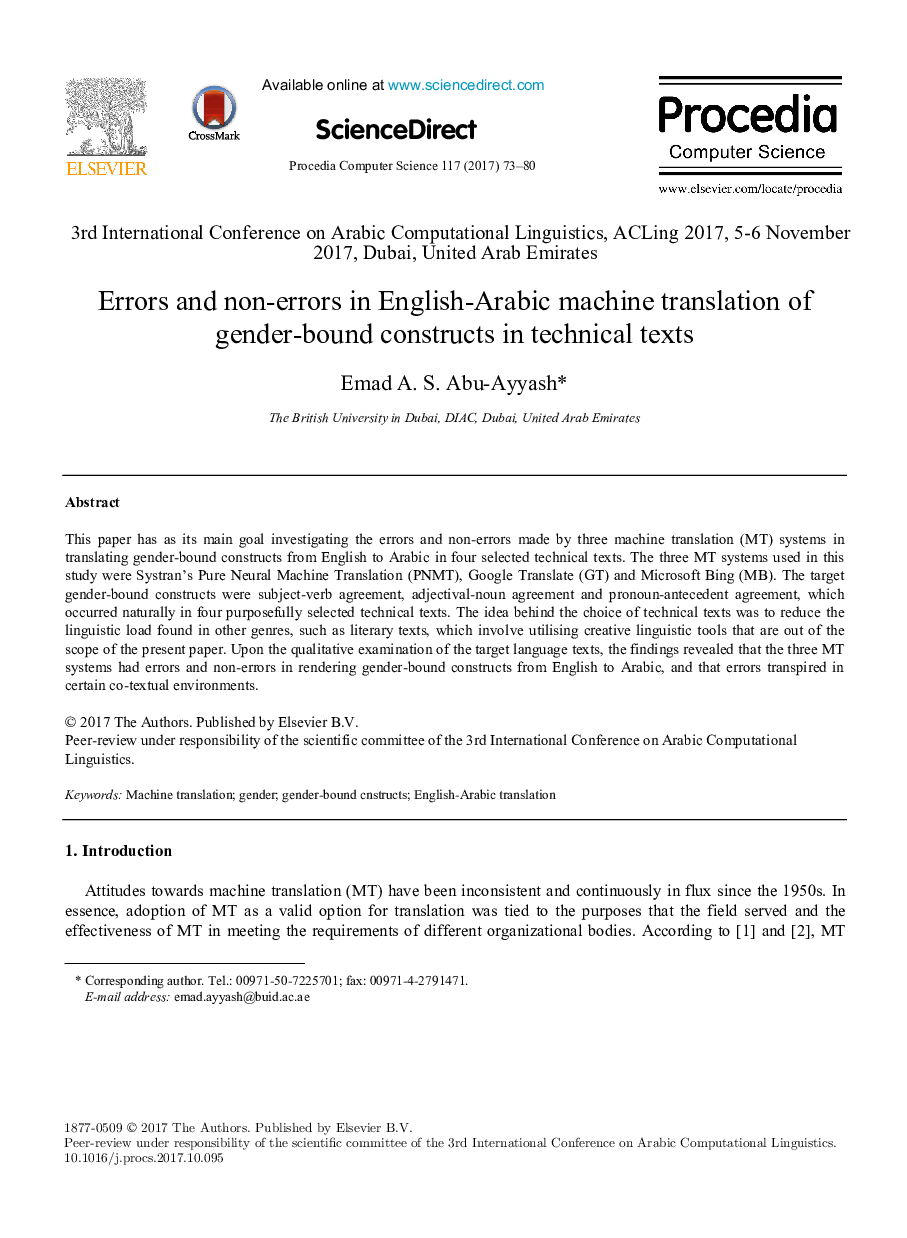| Article ID | Journal | Published Year | Pages | File Type |
|---|---|---|---|---|
| 6902044 | Procedia Computer Science | 2017 | 8 Pages |
Abstract
This paper has as its main goal investigating the errors and non-errors made by three machine translation (MT) systems in translating gender-bound constructs from English to Arabic in four selected technical texts. The three MT systems used in this study were Systran's Pure Neural Machine Translation (PNMT), Google Translate (GT) and Microsoft Bing (MB). The target gender-bound constructs were subject-verb agreement, adjectival-noun agreement and pronoun-antecedent agreement, which occurred naturally in four purposefully selected technical texts. The idea behind the choice of technical texts was to reduce the linguistic load found in other genres, such as literary texts, which involve utilising creative linguistic tools that are out of the scope of the present paper. Upon the qualitative examination of the target language texts, the findings revealed that the three MT systems had errors and non-errors in rendering gender-bound constructs from English to Arabic, and that errors transpired in certain co-textual environments.
Keywords
Related Topics
Physical Sciences and Engineering
Computer Science
Computer Science (General)
Authors
Emad A.S. Abu-Ayyash,
